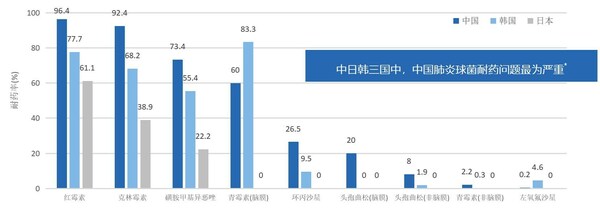预约演示
更新于:2025-05-07
(non-specific) purulent meningitis
(非特异性)化脓性脑膜炎
更新于:2025-05-07
基本信息
别名 (non-specific) purulent meningitis、Meningitis, purulent NOS、Purulent meningitis + [7] |
简介- |
关联
3
项与 (非特异性)化脓性脑膜炎 相关的药物靶点 |
作用机制 PBPs抑制剂 [+1] |
非在研适应症 |
最高研发阶段批准上市 |
首次获批国家/地区 日本 |
首次获批日期1995-08-01 |
靶点 |
作用机制 PBPs抑制剂 [+1] |
在研适应症 |
非在研适应症- |
最高研发阶段批准上市 |
首次获批国家/地区 日本 |
首次获批日期1981-12-07 |
作用机制 肽聚糖抑制剂 [+1] |
原研机构 |
最高研发阶段批准上市 |
首次获批国家/地区- |
首次获批日期1954-01-01 |
3
项与 (非特异性)化脓性脑膜炎 相关的临床试验JPRN-JapicCTI-111714
Phase3 study of T-1220 in the patients with bacterial infectious disease-Open label, multi-center study-
开始日期- |
申办/合作机构 |
JPRN-jRCT2080221672
Phase3 study of T-1220 in the patients with bacterial infectious disease-Open label, multi-center study-
开始日期2011-12-14 |
申办/合作机构 |
CTR20140358
注射用盐酸头孢唑兰人体药代动力学研究
对健康受试者进行注射用盐酸头孢唑兰的药代动力学试验,测定头孢唑兰的经时血药浓度,计算头孢唑兰药代动力学参数,了解注射用盐酸头孢唑兰在人体吸收、分布、代谢、消除规律,为制定注射用盐酸头孢唑兰II期临床试验方案提供试验依据。
开始日期2009-09-14 |
申办/合作机构 |
100 项与 (非特异性)化脓性脑膜炎 相关的临床结果
登录后查看更多信息
100 项与 (非特异性)化脓性脑膜炎 相关的转化医学
登录后查看更多信息
0 项与 (非特异性)化脓性脑膜炎 相关的专利(医药)
登录后查看更多信息
1,806
项与 (非特异性)化脓性脑膜炎 相关的文献(医药)2025-12-01·Child's Nervous System
Subarachnoid puncture via the anterior fontanelle with intrathecal vancomycin for refractory purulent meningitis: a pediatric case report
Article
作者: Li, Yan ; Huang, Lisu ; Yang, Xinghui ; Huang, Guolan ; Fang, Xiaohui ; Xie, Yongping
2025-01-01·Clinical Laboratory
Epidemiology and Antibiotic Resistance of Neonatal Invasive Group B Streptococcus Disease: a Retrospective Study in Fuzhou, China, 2012 - 2021
Article
作者: Chen, Huiyu ; Zhong, Hui ; Liu, Chen ; Que, Chengwen ; Wu, Zhihui ; Qiu, Huahong
2024-11-29·Medicine
Infective endocarditis causing recurrent cerebral infarction, cerebral hemorrhage and septic meningitis: A case report
Article
作者: Du, Yeliang ; Han, Jilan ; Xing, Guoping ; Fan, Lingyan ; Yu, Haining ; Wang, Huiliang ; Li, Chenxi
1
项与 (非特异性)化脓性脑膜炎 相关的新闻(医药)2023-12-20
·美通社
昆明
2023年12月20日
/美通社/ -- 近日,沃森生物在其公众号发布关于细菌耐药性的科普文章,以下为原文:
抗生素主要用于治疗各种细菌感染或致病微生物感染类疾病,一般情况下对其宿主不会产生严重的副作用。但由于抗生素的滥用导致不少细菌都渐渐对抗生素"脱敏",也就是产生了耐药性。细菌耐药性又称抗药性,是指细菌与抗菌药物多次接触后,细菌对抗菌药物变得不敏感的现象,耐药性一旦产生,药物的化学治疗作用就会明显下降。耐药所致的治疗无效或治疗周期延长、治疗费用增加等,会给患者及家庭带来沉重负担。根据WHO报告,抗生素耐药最严重的结果将是导致死亡!
儿童生活中常见的细菌感染包括脑膜炎奈瑟菌、流感嗜血杆菌、肺炎球菌,许多研究显示它们的耐药现象日益严重,需要尤为重视!
脑膜炎奈瑟菌耐药性增强,治疗尤为困难
脑膜炎奈瑟菌(Nm菌株)是引起流行性脑脊髓膜炎(流脑)的罪魁祸首。
流脑具有
发病急、进展快、传染性强、隐性感染率高、病死率高
等特点。
在全球范围内流脑病死率超过10%,致残率高,疾病负担严重
[1]
。
国内相关专家学者通过对我国2005—2019年收集的30个省份Nm菌株进行抗生素敏感性检测,研究结果显示
[2]
:
Nm菌株对头孢噻肟、氨苄西林和青霉素3种药物均出现耐药菌株。
近年来国内外对喹诺酮类抗生素耐药的脑膜炎奈瑟菌比例增加。
磺胺类药物,如磺胺甲基异噁唑,历史上曾经作为临床救治和预防性服药首选药物,初期的Nm菌株均表现出对磺胺药的敏感,后期耐药菌株比例逐渐升高。因此,磺胺类药物已不再推荐作为临床救治和预防性服药的首选药物。
治疗脑膜炎奈瑟菌感染可使用多种抗生素,但据研究结果显示随着
Nm菌株耐药性增强,可选择的治疗抗生素种类日益减少,使用疫苗预防流脑疾病迫在眉睫。
侵袭性流感嗜血杆菌对主要抗感染药物的耐药率持续升高
侵袭性流感嗜血杆菌(
Hi)
可侵入血流引起败血症、化脓性脑膜炎、肺炎和化脓性骨关节炎等侵袭性感染,患者病情重、进展快、病死率高。
氨苄西林等β-内酰胺酶类药物既往被认为是主要的抗Hi药物,但近年来耐药率持续升高,国内相关研究
[3],[4]
显示:
侵袭性Hi对复方磺胺甲噁唑、氨苄西林耐药率分别达86.2%、79.3%,表明此类药物
不再适用于首选临床经验治疗用药
。
侵袭性Hi对阿奇霉素非敏感率达到55.2%,证实大环内酯类药物
不宜作为治疗
Hi感染的经验用药
;
环丙沙星属于喹诺酮类抗生素,出于安全性考虑,喹诺酮类药物在儿童中的
应用比较谨慎
。
主要的抗
Hi药物耐药率持续升高,可用药物日益减少!
肺炎球菌性疾病危害巨大,但治疗却面临严重挑战
肺炎球菌(Spn)是一种重要的条件致病菌,寄生在健康人鼻咽部,婴幼儿是主要的携带宿主。当机体抵抗力下降时或者麻疹、流感等呼吸道病毒感染以后,或营养不良、老年体弱等情况下,Spn将感染机体,导致机体罹患肺炎球菌性疾病(PD)。
肺炎球菌性疾病是全球疫苗可预防疾病中死亡数和死亡占比最高的疾病。
婴幼儿受侵袭性肺炎球菌影响可导致多种疾病及严重后遗症。
在过去的几十年里,肺炎球菌耐药的流行病学一直受到抗菌素的广泛应用、耐药克隆的传播、和PCV疫苗引入的影响。在抗菌素被广泛使用、耐药克隆大量传播,而PCV疫苗应用较少的许多亚洲国家,肺炎球菌的耐药尤其严重
[5],[6]
!
国内10个城市肺炎球菌耐药性研究
[7]
显示,肺炎球菌对抗生素耐药严重。尤其是在5岁以下儿童中,肺炎球菌对各常用抗菌药物耐药率均高于其他年龄组。
无论是脑膜炎奈瑟菌、流感嗜血杆菌还是肺炎球菌,一旦感染都会对孩子和家庭造成极大的伤害,目前我国耐药率较高,且耐药问题还在逐年扩大,在高疾病负担和治疗困难的双重压力下,细菌性疾病的控制应以预防为主,接种疫苗就是最经济有效的方法。
参考文献:
[1] 邵祝军.流行性脑脊髓膜炎流行现状及防控形势.中华预防医学杂志,2019,53(2):129-132.
[2] 徐丽,韩馥伊,吴丹,等.2005—2019年中国538株脑膜炎奈瑟菌抗生素耐药性分析[J].中华预防医学杂志, 2021, 55(2):5.DOI:10.3760/cma.j.cn112150-20200922-01227.
[3] 聂曼杰等.儿童侵袭性流感嗜血杆菌的临床特征及血清型和耐药性[J].河南医学研究.2023,32(8):1365-1368.
[4] 贾艳会,华春珍,周明明,等.2020年儿童流感嗜血杆菌临床株耐药性多中心研究[J].中国抗生素杂志, 2022, 47(9):951-956.
[5] Song J H. Advances in pneumococcal antibiotic resistance[J]. Expert review of respiratory medicine, 2013, 7(5): 491-498.
[6] KIM SH, SONG JH, CHUNG DR, et al. Changing trends in antimicrobial resistance and serotypes of Streptococcus pneumoniae isolates in Asian countries: an Asian Network for Surveillance of Resistant Pathogens (ANSORP) study[J]. Antimicrobial Agents and Chemotherapy, 2012, 56(3): 1418-1426.
[7] 王启,张菲菲,赵春江,陈宏斌,王占伟,郭宇,李荷楠,王辉.2010-2011年中国肺炎链球菌耐药性和血清型研究[J].中华结核和呼吸杂志,2013,36(2):106-112.DOI:10.3760/cma.j.issn.1001-0939.2013.02.009.

疫苗微生物疗法临床研究
分析
对领域进行一次全面的分析。
登录
或

Eureka LS:
全新生物医药AI Agent 覆盖科研全链路,让突破性发现快人一步
立即开始免费试用!
智慧芽新药情报库是智慧芽专为生命科学人士构建的基于AI的创新药情报平台,助您全方位提升您的研发与决策效率。
立即开始数据试用!
智慧芽新药库数据也通过智慧芽数据服务平台,以API或者数据包形式对外开放,助您更加充分利用智慧芽新药情报信息。
生物序列数据库
生物药研发创新
免费使用
化学结构数据库
小分子化药研发创新
免费使用



